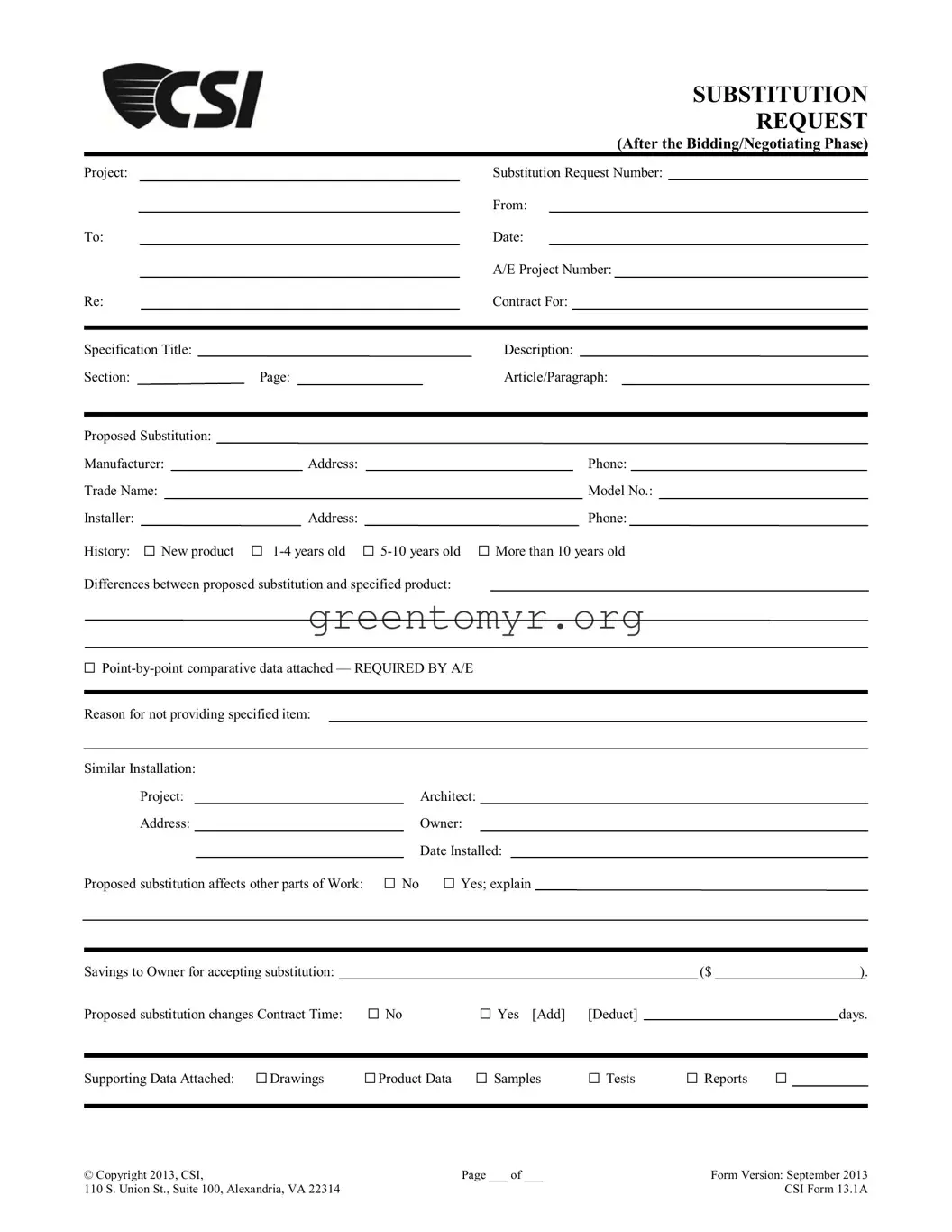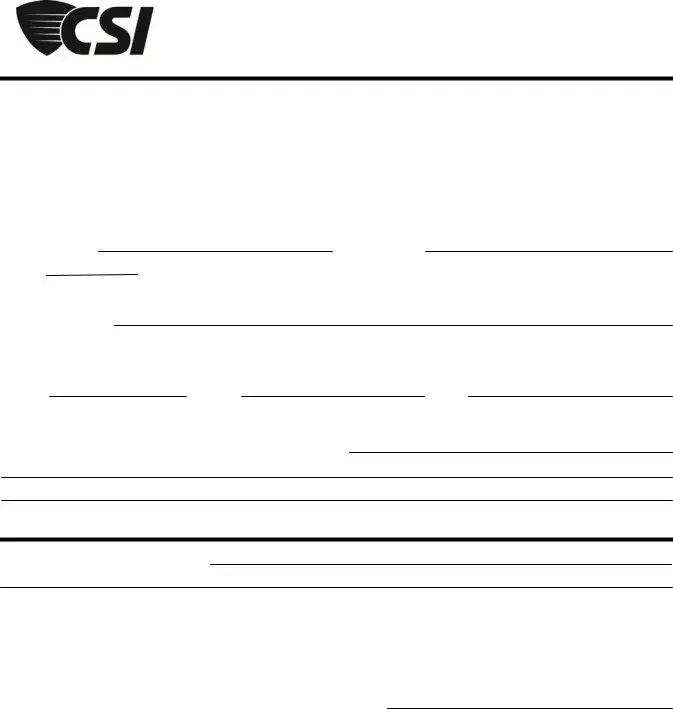Filling out the CSi 13 1A form correctly is crucial for a smooth substitution request process. However, many individuals make mistakes that can lead to delays or even rejection of their requests. Here are some common pitfalls observed.
One major mistake occurs with incomplete information. Many people fail to fill out all necessary fields, such as the project name or the specific substitution description. Omitting details creates confusion for the reviewer and could result in the request being set aside until the missing information is provided.
Another frequent error lies in not explaining the differences between the proposed substitution and the specified product. This section is vital for the architect or engineer to understand why a change is suggested. Providing point-by-point comparative data is essential, and many overlook this requirement, severely compromising their case.
Some individuals mistakenly reuse old forms, unaware that the version may have changed. The form version is critical. Using outdated documents can lead to a lack of compliance with current requirements, potentially causing delays or the rejection of the request.
A common blunder is failing to clarify the impact on contract time. If the proposed substitution will cause changes in the timeline, such as adding or deducting days, this must be clearly noted. Many people neglect this important detail or provide vague wording, undermining the clarity of their intentions.
Inadequate justification for not providing the specified item is another oversight. A thorough explanation helps the decision-maker understand the reason for the substitution. Skipping this step may leave individuals feeling frustrated when their requests do not advance.
Individuals sometimes forget to address whether the proposed substitution affects other parts of the work. This could create unforeseen issues down the line. Not ticking the relevant box and providing an explanation can lead to complications that could be avoided.
Finally, supporting data often comes up short. Some may forget to attach important documentation, such as product data, drawings, or tests. Including all necessary supportive evidence is essential for legitimizing claims. If this important information is lacking, the request is likely to be delayed or denied.
Being mindful of these common mistakes when completing the CSi 13 1A form can significantly enhance the efficiency of the substitution request process. Attention to detail ensures a smoother experience for all parties involved.

